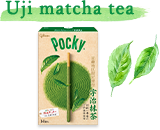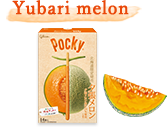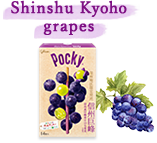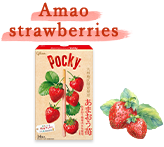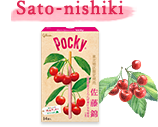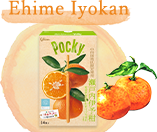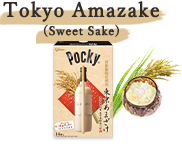I met a range of people who were bewitched by the flavor of these fruits.
Every year, from late June through early July, is when the cherry harvest, Sato Nishiki Cherry included, begins.
Each and every cherry carefully produced by farmers makes its way to consumers nationwide.
In this, our last and third installment, we visit the harvest festival and the farmers at the peak of the harvest,
as well as a facility that produces various cherry-based items.
The Nihon-ichi Sakuranbo Matsuri is a cherry festival that over 200,000 guests attend.
This year is no exception, with the festival in full swing.
Even the festival shrines are cherries!
“The Nihon-ichi Sakuranbo Matsuri is a festival that promotes cherries from Yamagata Prefecture. It was held this year on June 17-18. The Bunshokan, the site of the old prefectural office, is located centrally in Yamagata. The large thoroughfare through Nanokamachi spans one kilometer long and is closed to traffic, making it a festival paradise for pedestrians, with portable shrines being paraded, dance contests, and even a cherry pit spitting contest. Over the two days, some 240,000 people attended the event, making it wildly successful.

Long, snaking lines formed early in the morning to receive the free cherries being handed out.
They came for one thing: getting freshly-picked cherries. The Sugodama event treats guests to free, chilled cherries from Yamagata, and guests, largely families, throng from early morning to try a sample. A young girl stood before the bright red fruit and said she had come to get some for herself and her brother. She was the picture of happiness.

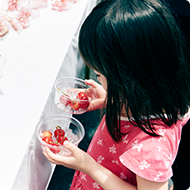
A 30 meter-long chute!
Move over, noodles served in a flume of water! Now the cherries come rushing past!
The signature event of the festival is what is hailed as Japan’s largest flume of flowing cherries. Bamboo is cut in half and fashioned into a 30 meter-long flume of water, with the cherries rushing past. In this unique pastime, guests try to catch the cherries with chopsticks. The cool appearance of the cherries and the force with which they rush past sees parents and children scrambling to keep up. It’s harder than it looks!


Turning delicious cherries into sweets!
There is also a contest where high schoolers vie for the best dessert concoction.
On the main stage, local high schoolers squared off in a contest for the best sweet. The victor this year was the “Single Piece of Bliss,†a puree of cherry topped with white chocolate. This creation came from Yamagata Nishi High School. This item will go on to be sold as a limited edition item at patisseries in the prefecture.
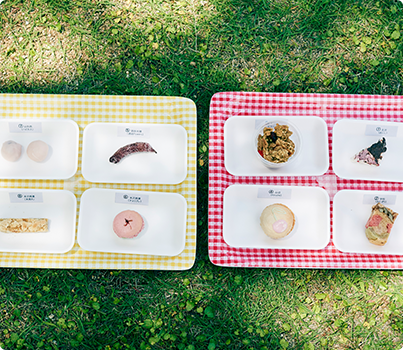
Pocky made locally
Sato Nishiki Cherries put a smile on everyone’s face.
At the event, I met families, girls appearing in the dance contest, ambassadors for Tsuyahime rice, and many more ardent fans of cherries. Posing for a shot with the Sato Nishiki Cherry Pocky that went on sale last year. The Nihon-ichi Sakuranbo Festival was blessed with clear skies for a happy occasion.

![]()

We met Perorin, Yamagata’s local mascot, at the venue. We gave him (her?) the Sato Nishiki Cherry JIMOTO Pocky we had. He’s like a PR ambassador for Yamagata.
I took time to revisit the farms I had reported on when the cherries first sprouted.
I saw them harvesting the fruit and packing it in boxes.
They were truly in the thick of the harvest for these red beauties.
These were the cherries we had longed to see!
In the first installment of this series, we visited Fruits Sato, a cherry farm. Now we’re back there again to see what the trees look like during the harvest! They agreed to our request, so we made our way out. The ripened Sato Nishiki Cherries are bright red and at their prime. The cinnabar-red of the cherries makes a vivid contrast against the green surroundings.
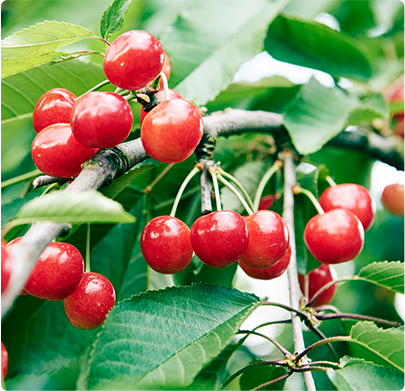
I got the chance to sample some Sato Nishiki Cherries that I picked on the spot.
This is truly the height of luxury.
“Don’t hesitate to pick one and try it.â€
Needing no further prompting from Mr. Sato, I spent some time availing myself of what was a private cherry field for me alone to pick! He added, “Try the ones near the tips of the branches, not the base, as they are red all around and riper.†I soon realized that once you start eating cherries, you almost can’t stop! Mr. Sato says that they have fields they leave open to the public to pick. “Lots of people come. Some people even eat 100 cherries in one go,†he says, laughing.


Shelter from the rain is essential to growing a round, red crop.
Proper moisture is key to the Sato Nishiki Cherry crop, but once the fruit begins to appear, rainwater can cause it to split. That’s why they use tents to cover the cherries after a certain point in the growth period.
The temperature must also be regulated between afternoon and evening, with the ideal at 18 degrees Celsius. If the temperature is not 18 degrees or lower at night, the fruit will not turn properly red. Mr. Sato says that this year was “not bad†as far as the weather is concerned. These delicate and time-consuming fruits mean that when the harvest comes, the farmers are all the more happy to see the crop doing well.
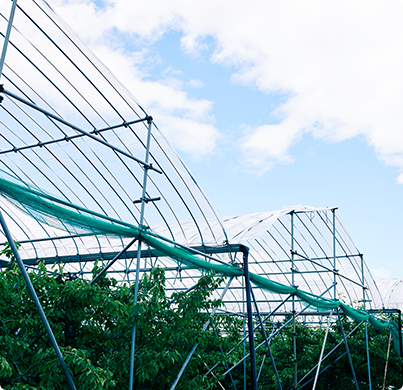
Veteran local artisans gather for the peak shipping season!
I left the fields and made my way to a packing area.
Five women were in the thick of packing the cherries.
They sort and select the vast amount of Sato Nishiki Cherries that made their way from the fields this season, and they pack them up in boxes. These women have spent upwards of ten years packing cherries in this fashion during the shipping season. Their hands move deftly, the very picture of experience. There is something entrancing about the speed with which they work.

The women pack each cherry up with passion, sending them across the nation.
Each cherry is ranked based on size, color, and shape. They are then neatly packed in boxes by category and measured to the gram, then boxed up. Since cherries are smaller than other fruit, they take even more time and care. I felt like I finally understood why the Sato Nishiki Cherry are referred to as “edible rubies.â€

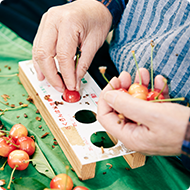
![]()
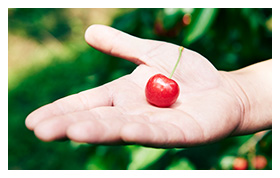
Cherries considered delicious are, first and foremost, nice and red. The part where the fruit intersects with the stem should be slightly concave, in the shape of a heart. You can tell if the fruit is plump if you see fine vertical and horizontal lines on the surface.
Apparently, ones with shorter and thicker stems are also sweeter. Let’s use this insider knowledge to pick the best cherries!
Sweets, jelly, sherbet...
The sweet and sour flavor of cherries is transformed into new dishes.
The cherries are processed and prepared to deliver fresh to consumers everywhere.
Lastly, I visited Suzuki Foods Products Co., Ltd., where Yamagata cherries are then used to create purees and juices. They gave me a special tour of their factories.
First is a visit to the raw materials storage room. The cherries conveyed from the farm pass through here and are stored in refrigerators until ready.
The cherries shipped here, incidentally, are those that are slightly off in terms of shape or aesthetic appearance. Of course, they are totally edible (and they were -- I tried!).
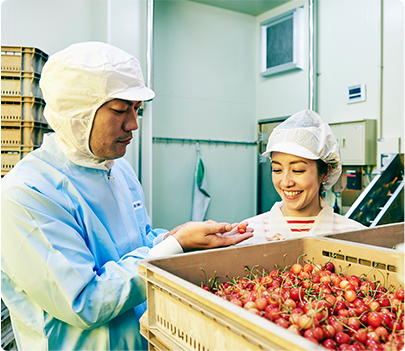
They are thoroughly rinsed and then sent on a conveyor belt.
Next, they are cleansed with water in order to remove any adhering dirt and dust. Then, they are visually checked to ensure that the fruit has no damage. The cherries are then transported to a heating process.
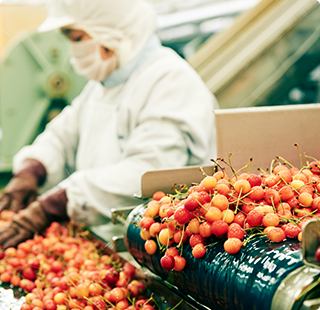
They are repeatedly pureed and strained until they turn into a fine paste.
Machines automatically heat the fruit while simultaneously pitting it and removing the stem. The cherry meat is then strained against a screen and pureed. The screens are progressively made finer, from 3mm, to 0.8.mm, to 0.5mm, creating a fine paste. They are then packed and chilled, being delivered to the various processing plants of manufacturers of sweets and other products.
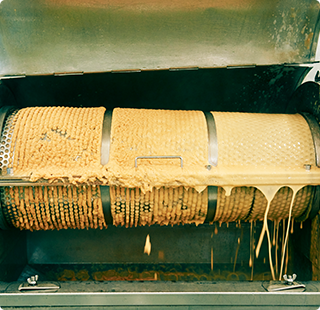

This site is like a behind-the-scenes supporter of the delicious Sato Nishiki Cherries that are delivered nationwide.
I was given a tour of the plant by Go Shibata, president of Suzuki Foods Co., Ltd., (pictured at right center), Tasuku Togashi, head of production (pictured at left), and Taisei Kikuchi, deputy director of production (pictured at right). Mr. Shibata said, “Sato Nishiki Cherry are obviously delicious raw, but allowing that flavor to last and bringing it to more people requires ongoing trial and error to perfect those methods.â€
Sato Nishiki Cherry may be tiny, but they are luxurious treats. It is through the passion and enthusiasm of all of these cherry producers that the Sato Nishiki Cherry shine so bright.



Taking home a handful of tiny “red rubies!â€
I visited right in the peak of the Sato Nishiki Cherry harvest. I received my fair share of cherries while reporting, as well as bought more as souvenirs at the Nihon-Ichi Sakuranbo Matsuri. At Fruits Sato, I even went so far as to special order a bunch more! You could say that I truly sampled the cherries to the fullest!
















